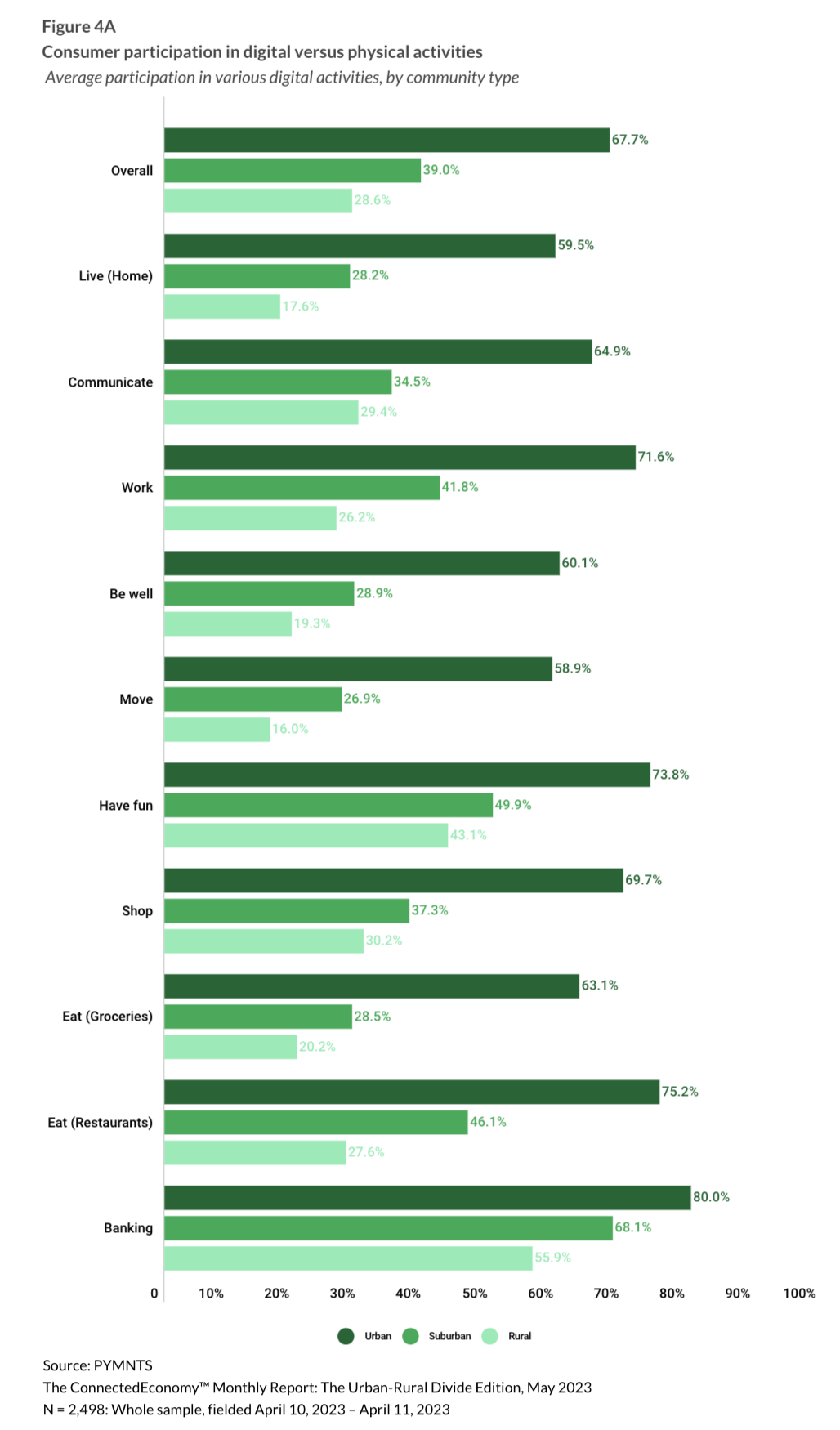
Grocers may have made real headway in driving digital adoption with urban consumers, but when it comes to the suburbs and the countryside, they have a long way to go.

Research from PYMNTS’ May study, “ConnectedEconomy™ Monthly Report: The Urban-Rural Health Divide Edition,” which drew from a survey of nearly 2,500 U.S. consumers, revealed that 63% of consumers living in urban areas engage with grocers digitally, a share more than three times as large as that of rural consumers.
In fact, just 20% of those residing in rural areas reported that they engage digitally with grocers, and an only moderately higher 29% of those living in suburbs said the same.
Grocers are working hard to drive digital adoption and expand their omnichannel audiences.
Albertsons Companies, owner of a range of popular supermarket chains including its self-titled brand as well as Safeway, Vons, Jewel-Osco and others, shared on a call discussing its first-quarter 2023 earnings results Tuesday (July 25) that its loyalty program membership grew by 16% to nearly 36 million, up by about 2 million from last quarter.
Part of the disparity between adoption in cities and in the country comes from coverage, with grocers and aggregators noting the greater efficiency of building out their delivery infrastructure in dense, urban areas, where the distance between houses is smaller, than in sparser locales.
On personal blogs and public forums, Instacart shoppers and DoorDash drivers describe the difficulty of fulfilling orders in the suburbs relative to in urban areas, with longer drives and lower-tipping consumers.
Still, DoorDash has made major inroads in the suburbs spite of the costs. The company most recently discussed its continued strength in these underpenetrated regions on an earnings call last year, after being asked whether it was facing “any pressure from competitors in nonurban markets.”
“So far, we haven’t seen an impact [from] recent competitor announcements or moves to invest in certain types of geographies versus other types of geographies in the numbers,” said CEO Tony Xu at the time.